How to Reach Balak Ram Mandir Ayodhya? | Aarti Timings | 25 Fascinating Facts About Balak Ram Ayodhya (Ram Mandir)
This post was last updated on February 1st, 2024
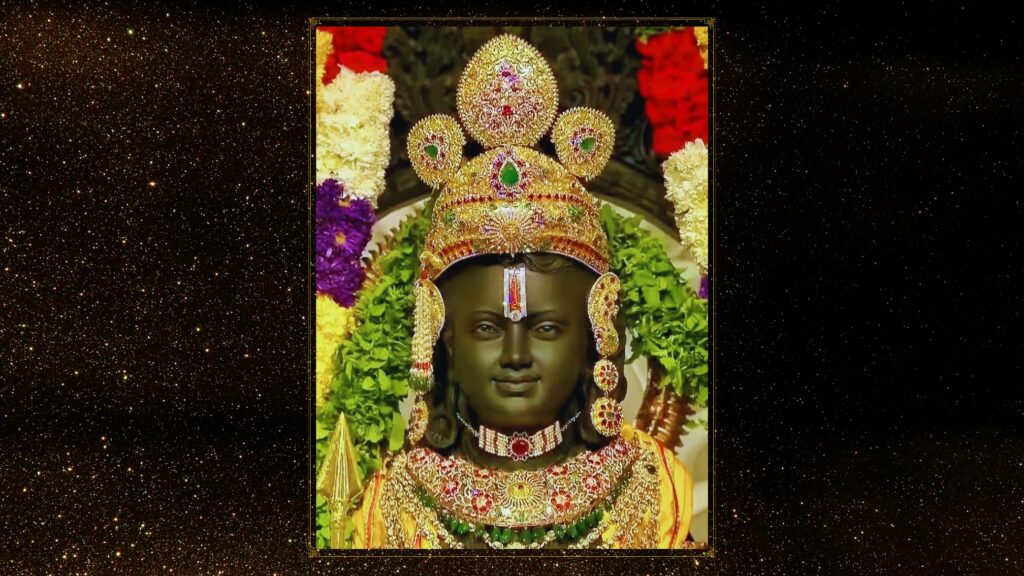
The Balak Ram Mandir in Ayodhya has been a longstanding symbol of religious and cultural significance in India.
The controversy surrounding the site dates back to the 16th century when the Mughal emperor Babur ordered the construction of a mosque, known as the Babri Masjid, at the site believed to be the birthplace of Lord Rama. Tensions over the religious site escalated in the 20th century, leading to communal disputes and legal battles. The Babri Masjid was demolished on December 6, 1992, by a Hindu nationalist mob, sparking widespread riots and tensions between religious communities.
In 2019, the Supreme Court of India settled the decades-long legal dispute by delivering a verdict in favour of the construction of a Ram Mandir at the disputed site. The court recognized the historical and cultural significance of the Ram Janmabhoomi (birthplace of Lord Rama) for Hindus. Following the verdict, the construction of the Ram Mandir commenced in Ayodhya.
Reference: https://www.sci.gov.in/pdf/JUD_2.pdf
The temple, dedicated to Lord Rama, aims to become a symbol of national integration and harmony while marking the end of a contentious chapter in Indian history.
On 22nd January 2024, Monday, our esteemed Prime Minister, Narendra Modi, led the consecration ceremony of Ram Lalla at the recently constructed Ayodhya Temple, joined by RSS chief Mohan Bhagwat and other distinguished guests. The pran pratistha consecration ceremony signifies a pivotal moment for one of the world’s oldest religions, concluding a 500-year-long quest for a Ram Mandir in Ayodhya.
Balak Ram Mandir Ayodhya Opening Date
The city was magnificently adorned with vibrant flowers with a festive décor since weeks in preparation for the ‘Pran Pratishtha’ ceremony. For the grand inauguration of Ram Temple in Uttar Pradesh’s Ayodhya that held on January 22nd 2024, people from across the country all who were geared up to visit the temple town to witness the monumental consecration ceremony of Lord Ram were seen yesterday in colossal numbers.
From January 23th 2024, the Ram Janmabhoomi temple in Ayodhya will be accessible to the general public. It is anticipated that a multitude of devotees and pilgrims would visit the majestic temple every single day to seek the divine presence of Lord Ram Lalla. The ‘pran pratishtha’ ceremony for the temple was scheduled for January 22nd 2024, that successfully held with Prime Minister Narendra Modi and various other distinguished guests gracing the occasion.
Prime Minister Narendra Modi of India officially inaugurated the significant Hindu temple at the location where a 16th-century mosque was dismantled by Hindu extremists in 1992. Narendra Modi after breaking his 11 days religious fast for successful and holy occasion expressed, “
Following centuries of anticipation, our beloved Ram has finally arrived. No longer will our revered Ram idol be housed in a tent; instead, it shall find its sacred abode within a divine temple. The radiant aura accompanying the sun on January 22nd 2024 signifies not merely a date on the calendar but marks the initiation of a new era, a significant turning point.”
The seven-day rituals for the consecration ceremony commenced on January 16th 2024 and on January 22nd 2024 at 12:20 pm, Lakshmi Kant Dixit, a priest from Varanasi, conducted the ‘Pran Pratishtha’ ceremony which was successfully carried and recorded at 12:29 pm on January 22nd 2024.
Ayodhya was adorned with numerous embellishments, featuring cutouts of orange and tangerine shades of Lord Ram, and posters adorned with religious slogans, all in celebration of this auspicious event. Stringent security measures were strictly implemented to ensure the safety of the ceremony.
Timings for Devotional Viewing
Morning Session: 7:00 am to 11:30 am
Afternoon Session: 2:00 pm to 7:00 pm
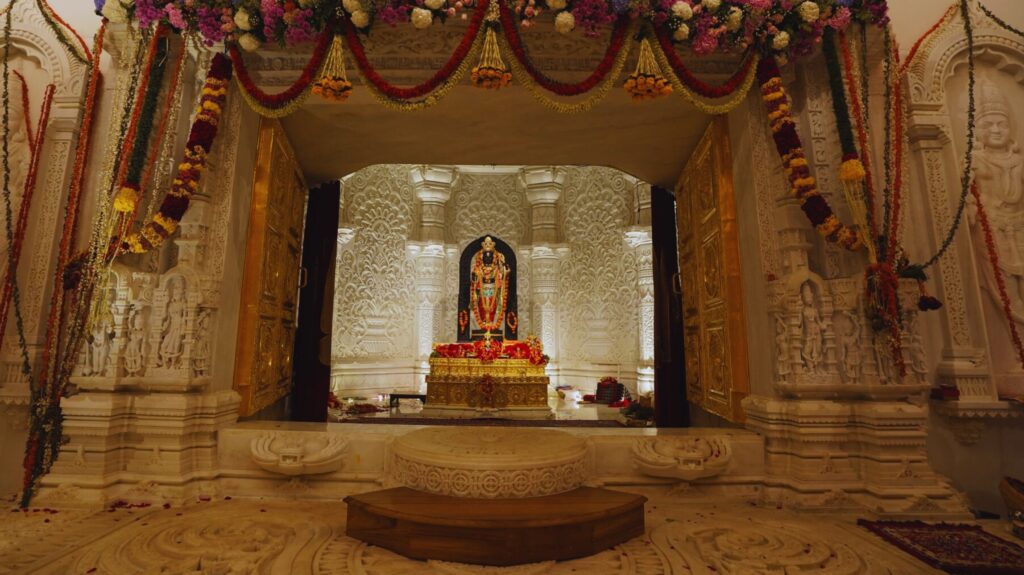
Balak Ram Aarti Timings
Jagaran/Shringar Aarti: 6:30 am
Sandhya Aarti: 7:30 pm
Free passes for the “aarti” are available both offline and online. As per the Shri Ram Janmbhoomi Teerth Kshetra website, offline passes can be acquired from the Camp Office at Shri Ram Janmbhoomi by presenting a valid government ID proof.
How to Reach Balak Ram Mandir Ayodhya?
For all the devotees and bhakts worldwide reaching Ram Lalla, Balak Ram Mandir Ayodhya has been made less hustling and convenient.
Traveling by Air
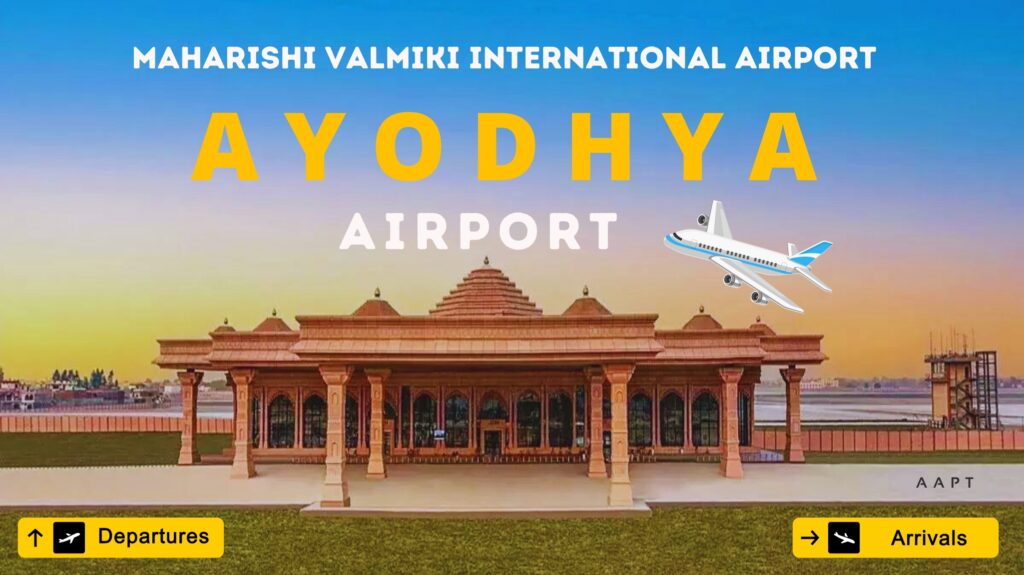
In December 2023, Prime Minister Modi inaugurated the Ayodhya International Airport (Maharishi Valmiki International Airport). Various airlines have announced special flights to the city, particularly in light of the consecration ceremony. Alternatively, visitors can opt for flights to Mahayogi Gokrakhnat Airport in Gorakhpur, Chaudhary Charan Singh International Airport in Lucknow, and the airports in Prayagraj or Varanasi.
By Train
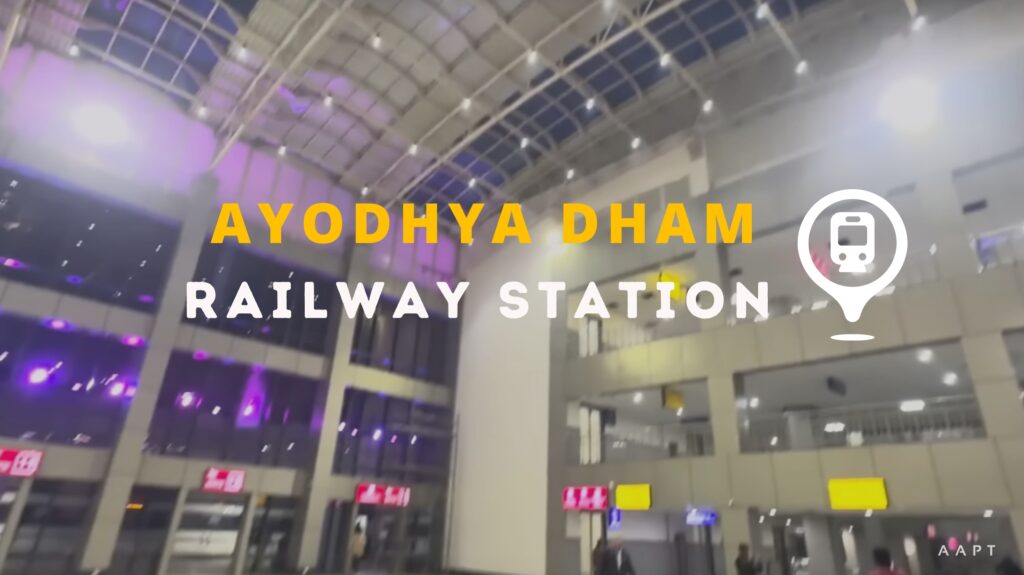
Several trains are available based on the states or cities from which visitors are arriving. Complementing the airport infrastructure, a dedicated Ayodhya Dham railway station is well-connected through railways spanning different zones.
By Road
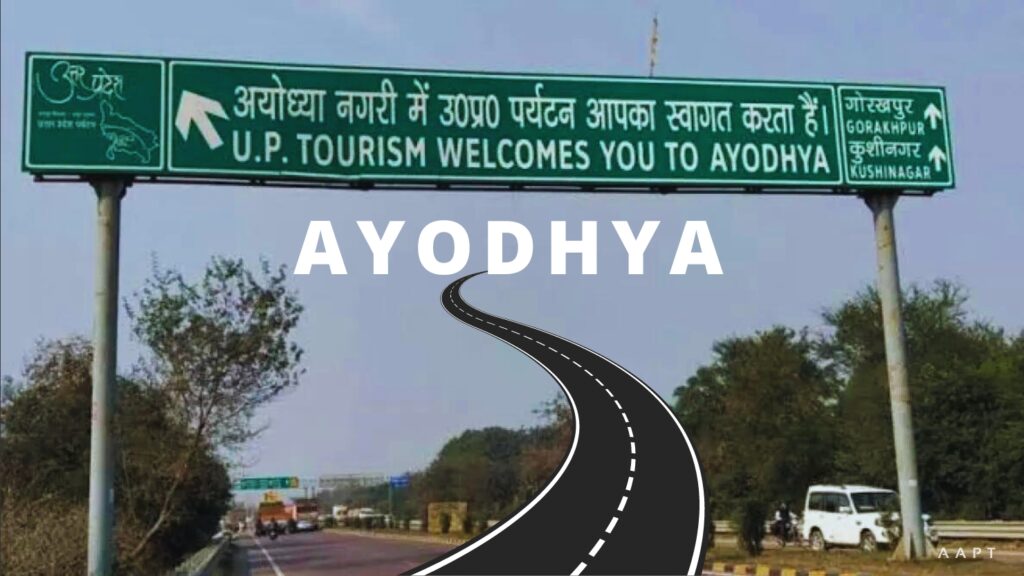
Ayodhya is accessible through a range of public and private service buses, which operate on a regular basis. Buses from the Uttar Pradesh Transport Corporation connect Ayodhya with major cities such as Lucknow, Gorakhpur, Delhi, and others.
Upon your arrival in Ayodhya, reaching the Ram Mandir is convenient. Local transportation choices, such as auto-rickshaws and cycle rickshaws, are easily accessible. Situated on the banks of the Sarayu River, the temple offers a tranquil setting for your spiritual exploration.
Balak Ram Mandir Ayodhya Construction
The magnificent Ayodhya temple dedicated to Ram Lalla, the child form of Lord Ram, is a seamless blend of traditional Indian heritage architecture and scientific construction methods, ensuring its endurance for centuries. Shri Nripendra Misra, the chairperson of the temple construction committee for the Shri Ram Janmabhoomi Teerth Kshetra Trust in Ayodhya, affirms, “The temple has been designed to withstand the test of time, with a lifespan exceeding a thousand years.” He emphasizes the significant contributions made by top Indian scientists to create an unparalleled architectural marvel. Additionally, advancements from ISRO technologies have been thoughtfully incorporated into the temple’s construction.
Crafted in accordance with the Nagar Shaily, representing the architectural traditions of northern Indian temples, the design of the Ram Temple was entrusted to Chandrakant Sompura. With a familial legacy spanning 15 generations, the Sompura family, under Mr. Sompura’s guidance, has played a pivotal role in designing heritage temple structures, contributing to the creation of over 100 temples. According to Mr. Sompura, the Shri Ram Temple stands as a truly exceptional and rarely witnessed architectural masterpiece. He asserts that within the realm of architectural history, this temple is an unparalleled creation, not only within India but on a global scale.
The overall expanse of the temple covers 2.7 acres, featuring a built-up area of approximately 57,000 square feet, as elucidated by Nripendra Misra. The structure, spanning three floors, stands at a height of 161 feet, constituting around 70% of the Qutab Minar’s height.
Notably, the temple’s construction refrains from incorporating iron or steel, recognizing their limited lifespan of merely 80-90 years. Instead, the construction exclusively utilizes the highest quality granite, sandstone, and marble. The joints eschew the conventional use of cement or lime mortar, opting for a sophisticated lock-and-key mechanism employing grooves and ridges, as explained by Dr. Pradeep Kumar Ramancharla, the Director of the Central Building Research Institute, Roorkee, actively engaged in the construction project. The CBRI asserts that the structural design of the three-floored edifice is engineered to withstand an earthquake with a return period of 2,500 years.
Mr. Misra reveals that an analysis of the ground beneath the temple uncovered sandy and unstable terrain, presenting a unique challenge due to the proximity of the Sarayu River at one point. However, the scientific team devised an ingenious solution.
Initially, the soil across the entire temple area was excavated to a depth of 15 meters. Ramancharla details, “An engineered soil was laid to a depth of 12-14 meters, eschewing the use of steel re-bars, and the 47 layered bases were compacted to achieve a rock-like solidity.” Above this foundation, a 1.5–meter-thick M-35 grade metal-free concrete raft was added for reinforcement. To further fortify the base, a plinth consisting of solid granite stone, 6.3 meters thick, sourced from southern India was installed.
The visible portion of the Ram Mandir Ayodhya, temple is constructed using ‘Bansi Paharpur,’ a pink sandstone from Rajasthan. According to CBRI, the ground floor features 160 sandstone columns, the first floor has 132, and the second floor has 74, all intricately carved on the exterior. The sanctum sanctorum, adorned with decorative elements, is surfaced with white Makrana marble from Rajasthan—the same source used for the construction of the Taj Mahal.
CBRI emphasizes that the chosen computer model, preserving the Nagara style of architecture, ensures both performance and architectural integrity after analysing around 50 computer models. Proposed modifications enhance the structure’s architecture while ensuring safety against a 2500-year return period earthquake. Remarkably, the dry-jointed structure, designed for a 1000-year lifespan, consists solely of interlocked stone without steel reinforcement. CBRI has been actively involved in the Ram Mandir’s construction since early 2020, contributing to the structural design of the main temple, the design of the ‘Surya Tilak’ mechanism, design vetting of the temple foundation, and structural health monitoring of the main temple.
Dr. Sharda Srinivasan, an archaeologist specializing in heritage metals at the National Institute of Advanced Studies, Bengaluru, notes that the temple reflects traditional dry masonry architecture without the use of mortar, iron, or steel. She highlights traditional construction methods like the Mortis and Tenon technique and the trabeated system, which are also evident in the colossal sandstone Ram Temple. However, Ramancharla emphasizes that while the temple draws from heritage architecture, its design adheres to modern finite element analysis, sophisticated software tools, and 21st-century building codes.
Ramancharla confidently asserts, “Given the current state-of-the-art knowledge, there is no doubt that the Ram Mandir will endure well beyond a thousand years.” He further notes, “It was an immensely gratifying experience and an invaluable learning exercise, as challenges of this nature arise perhaps only once in a lifetime.”
Recommended: 8 Life Lessons to Learn From Lord Rama
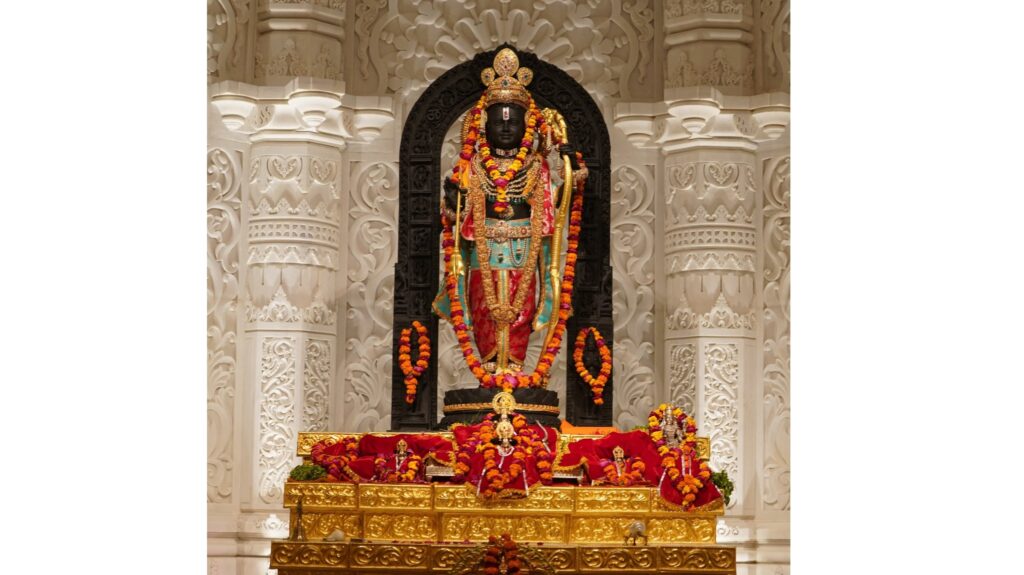
25 Fascinating Facts About Balak Ram Mandir Ayodhya
The colossal and holy Ram Mandir has been constructed with numerous surprising factors.
Let’s have a brief look on the fascinating facts about Ram Mandir Ayodhya.
#1. Constructed in the traditional Nagara style, the three-storey temple is crafted from pink sandstone sourced from Mirzapur and the Bansi-Paharpur hills in the Bharatpur district of Rajasthan.
#2. The temple, built at an estimated cost of Rs 1,800 crore, spans an expansive 71-acre area, with a total width of 250 feet and a height of 161 feet.
#3. The Ram temple holds immense importance for millions of devotees and followers of Hinduism who believe that it’s situated at the birthplace of Lord Ram.
#4. The idol also contains carvings of all ten incarnations of Lord Vishnu, Hindu Gods like Lord Hanuman and other major Hindu religious symbols.
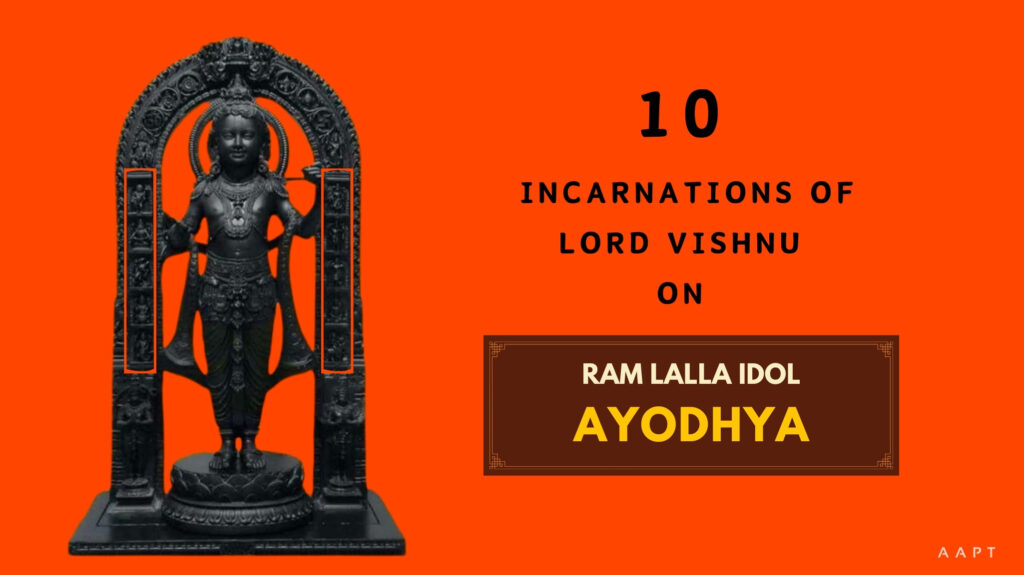
#5. The primary temple zone covers 2.67 acres, boasting 390 pillars, 46 doorways, and 5 mandaps.
#6. Within the main Garbh Griha (sanctum sanctorum, pictured below), idols of Ram Lalla are enshrined. The temple features multiple mandaps, including the Rang Mandap and Nritya Mandap.
#7. Two substantial Shaligram Stones sourced from the banks of Gandaki River, Nepal were transported to Ayodhya for the crafting of the idols in Ram Mandir. These formidable boulders approximately weighed around 30 tonnes.
#8. Devotees ascend 32 steps, reaching a height of 16.11 feet from the ground, before entering through the Singh Dwar.
#9. Facilities such as ramps and lifts have been incorporated to assist disabled and elderly visitors.
#10. The temple complex will include shrines dedicated to Maharshi Valmiki, Maharshi Vashishtha, Maharshi Vishwamitra, Maharshi Agastya, Nishad Raj, Mata Shabri, among others, in subsequent phases.
#11. The sanctum sanctorum and five mandaps are on the ground floor, while the Ram Darbar occupies the first floor. Plans for the second floor are yet to be finalized.
#12. The foundation of Ram Mandir Ayodhya has been established using with sacred soil from 2587 religious sites including Jhansi, Bithoori, Haldi Ghati, Yamunotri, and the Golden Temple.
#13. To guard against ground moisture, a 21-foot-high plinth has been constructed using granite.
#14. A Pilgrim Facility Centre (PFC) capable of accommodating 25,000 people is under construction, providing medical and locker facilities for pilgrims.
#15. The complex will feature a separate block with bathing areas, washrooms, and washbasins.
#16. The Ram Janmabhoomi Teerth Kshetra Trust have installed a ‘Time Capsule‘ at a depth of 2,000 feet beneath the ‘Ram Mandir’ in Ayodhya. This capsule has encapsulated a comprehensive history of the Ram Janmabhoomi. According to trust member Kameshwar Chaupal, the decision to place the capsule deep below the site is aimed at preventing any potential future disputes over the area.
#17. Future-proof artificial intelligence (AI) surveillance is anticipated for the temple’s security. A significant rise in pilgrim footfall is expected following the consecration ceremony.
#18. Traditional and indigenous technology is employed in the temple’s construction, with a strong emphasis on environmental conservation. Approximately 70% of the 71-acre area has been preserved as green space.
#19. Each of the 390 pillars will showcase 16-28 idols of deities, while the walls will display intricate carvings of mythological figures.
#20. To maintain consistency, each pillar is exclusively carved by a single artisan. Artisans from Odisha are responsible for pillar carvings, while those from Rajasthan are engaged in marble flooring and wall work.
#21. Every Ram Navami at noon, a unique system employing mirrors and lenses will focus the sun’s rays onto the forehead of Ram Lalla’s idol. The inaugural solar anointment is scheduled for March 29th 2024 on Ram Navami. This ingenious mechanical arrangement operates without electricity or batteries and utilizes brass instead of iron or steel.
#22. The idol of the five-year-old Ram Lalla, standing at a height of 51 inches, was meticulously crafted by the sculptor Mysuru-based sculptor Arun Yogiraj. The consecration ceremony for this idol was conducted today, marking its installation in the ‘Garbh Griha.’
#23. A delegation from Sri Lanka paid a visit to Ram Mandir Ayodhya, presenting a rock from the historic Ashok Vatika, a garden within Ravan’s kingdom where Sita was held captive.
#24. Notably, no iron has been utilized in the construction of the temple, emphasizing its durability for a minimum of 1,000 years.
#25. Encompassed by a rectangular parikrama known as Parkota, the temple features four peripheral temples dedicated to Goddess Bhagwati, Lord Shiva, Lord Surya, and Lord Ganesha. Additionally, a temple honouring Lord Hanuman stands on the southern arm, while another dedicated to Maa Annapurna graces the northern arm.
You may like this
Recommended For You
9 Important Lessons To Learn From Lord Shiva
Priyadarshini Muduli
A full time passionate writer with imperishable determination to bring healthy, smart and pragmatic changes individually and socially. Concentrate especially on lifestyle, life and personal improvement, relationships, mental health and behavior, viral issues and literature based subjects.




